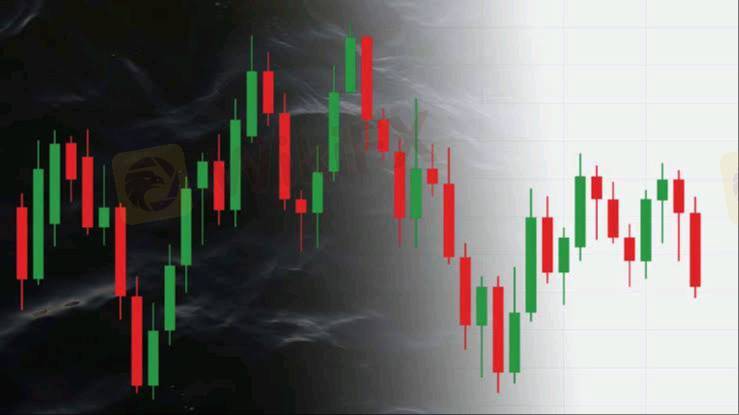
2025-02-06 19:58
Na indústriaUnderstanding Gas Fees in Ethereum Trading
#firstdealofthenewyearFateema
Understanding Gas Fees in Ethereum Trading
Gas fees are an essential part of trading on the Ethereum blockchain. They represent the cost of processing transactions and executing smart contracts. Here’s a breakdown of how gas fees work and how they impact Ethereum trading.
---
1. What Are Gas Fees?
Gas fees are payments made to Ethereum network validators (miners or stakers) to process and confirm transactions. These fees ensure network security and incentivize validators to include transactions in the blockchain.
2. How Are Gas Fees Calculated?
Ethereum gas fees are measured in gwei, where 1 gwei = 0.000000001 ETH. The total gas fee depends on three main factors:
Gas Limit: The amount of computational effort required for a transaction (e.g., a simple ETH transfer needs 21,000 gas).
Base Fee: A mandatory fee set by the network, which fluctuates based on demand.
Priority Fee (Tip): An optional incentive paid to validators to speed up transaction processing.
Formula:
\text{Total Gas Fee} = \text{Gas Limit} \times (\text{Base Fee} + \text{Priority Fee})
3. Gas Fees in Different Types of Transactions
ETH Transfers: Generally low gas costs (~21,000 gas).
ERC-20 Token Transfers: Higher gas fees due to smart contract interactions (~40,000–100,000 gas).
Swaps on DEXs (e.g., Uniswap): Even higher gas fees due to multiple contract interactions (~100,000+ gas).
NFT Transactions: High variability based on minting and trading (~100,000+ gas).
4. Why Do Gas Fees Fluctuate?
Gas fees fluctuate based on:
Network Congestion: More users mean higher fees due to competition for block space.
Ethereum Upgrades: Ethereum’s shift to Proof of Stake (PoS) (via Ethereum 2.0) has helped reduce gas fees but hasn’t eliminated congestion.
Gas Wars: When demand spikes (e.g., NFT mints), users increase priority fees to get transactions confirmed faster.
5. How to Reduce Gas Fees?
Use Layer 2 Solutions: Platforms like Arbitrum, Optimism, and zkSync offer lower gas fees.
Time Your Transactions: Gas fees are lower during off-peak hours (late nights UTC).
Adjust Gas Settings: Manually set gas fees to optimize cost-efficiency.
Use Gas Fee Estimators: Tools like Etherscan Gas Tracker help predict fee costs.
6. Impact of Gas Fees on Ethereum Trading
High gas fees can reduce profitability, especially for small trades.
Users may opt for Layer 2 solutions or alternative blockchains (e.g., Solana, BSC).
DEX traders often batch transactions to minimize costs.
---
Final Thoughts
Understanding gas fees is crucial for efficient Ethereum trading. With Ethereum scaling solutions improving and new upgrades like EIP-4844 (proto-danksharding) expected, gas fees will likely become more manageable over time. Until then, strategic planning and Layer 2 adoption remain the best ways to optimize costs.
Would you like insights on any specific Ethereum gas fee strategies?
Gostar 0
FX2542805120
交易者
Discussões populares
Análise de mercado
Brasileiros FX
Análise de mercado
Brasileiros no FOREX
Análise de mercado
Don't buy Bitcoin now! Look at my review and description in the print!
Análise de mercado
análises do mercado financeiro ao vivo confira
Na indústria
Não consegui sacar meus peofits
Na indústria
Não é possível retirar
Categoria do mercado

Plataforma

Exibições

IB

Recrutamento

EA

Na indústria

Mercado

Índice
Understanding Gas Fees in Ethereum Trading
 Nigéria | 2025-02-06 19:58
Nigéria | 2025-02-06 19:58#firstdealofthenewyearFateema
Understanding Gas Fees in Ethereum Trading
Gas fees are an essential part of trading on the Ethereum blockchain. They represent the cost of processing transactions and executing smart contracts. Here’s a breakdown of how gas fees work and how they impact Ethereum trading.
---
1. What Are Gas Fees?
Gas fees are payments made to Ethereum network validators (miners or stakers) to process and confirm transactions. These fees ensure network security and incentivize validators to include transactions in the blockchain.
2. How Are Gas Fees Calculated?
Ethereum gas fees are measured in gwei, where 1 gwei = 0.000000001 ETH. The total gas fee depends on three main factors:
Gas Limit: The amount of computational effort required for a transaction (e.g., a simple ETH transfer needs 21,000 gas).
Base Fee: A mandatory fee set by the network, which fluctuates based on demand.
Priority Fee (Tip): An optional incentive paid to validators to speed up transaction processing.
Formula:
\text{Total Gas Fee} = \text{Gas Limit} \times (\text{Base Fee} + \text{Priority Fee})
3. Gas Fees in Different Types of Transactions
ETH Transfers: Generally low gas costs (~21,000 gas).
ERC-20 Token Transfers: Higher gas fees due to smart contract interactions (~40,000–100,000 gas).
Swaps on DEXs (e.g., Uniswap): Even higher gas fees due to multiple contract interactions (~100,000+ gas).
NFT Transactions: High variability based on minting and trading (~100,000+ gas).
4. Why Do Gas Fees Fluctuate?
Gas fees fluctuate based on:
Network Congestion: More users mean higher fees due to competition for block space.
Ethereum Upgrades: Ethereum’s shift to Proof of Stake (PoS) (via Ethereum 2.0) has helped reduce gas fees but hasn’t eliminated congestion.
Gas Wars: When demand spikes (e.g., NFT mints), users increase priority fees to get transactions confirmed faster.
5. How to Reduce Gas Fees?
Use Layer 2 Solutions: Platforms like Arbitrum, Optimism, and zkSync offer lower gas fees.
Time Your Transactions: Gas fees are lower during off-peak hours (late nights UTC).
Adjust Gas Settings: Manually set gas fees to optimize cost-efficiency.
Use Gas Fee Estimators: Tools like Etherscan Gas Tracker help predict fee costs.
6. Impact of Gas Fees on Ethereum Trading
High gas fees can reduce profitability, especially for small trades.
Users may opt for Layer 2 solutions or alternative blockchains (e.g., Solana, BSC).
DEX traders often batch transactions to minimize costs.
---
Final Thoughts
Understanding gas fees is crucial for efficient Ethereum trading. With Ethereum scaling solutions improving and new upgrades like EIP-4844 (proto-danksharding) expected, gas fees will likely become more manageable over time. Until then, strategic planning and Layer 2 adoption remain the best ways to optimize costs.
Would you like insights on any specific Ethereum gas fee strategies?
Gostar 0
Também quero comentar.
Perguntar
0Comentários

Ainda não há comentários. Faça o primeiro.

Perguntar
Ainda não há comentários. Faça o primeiro.